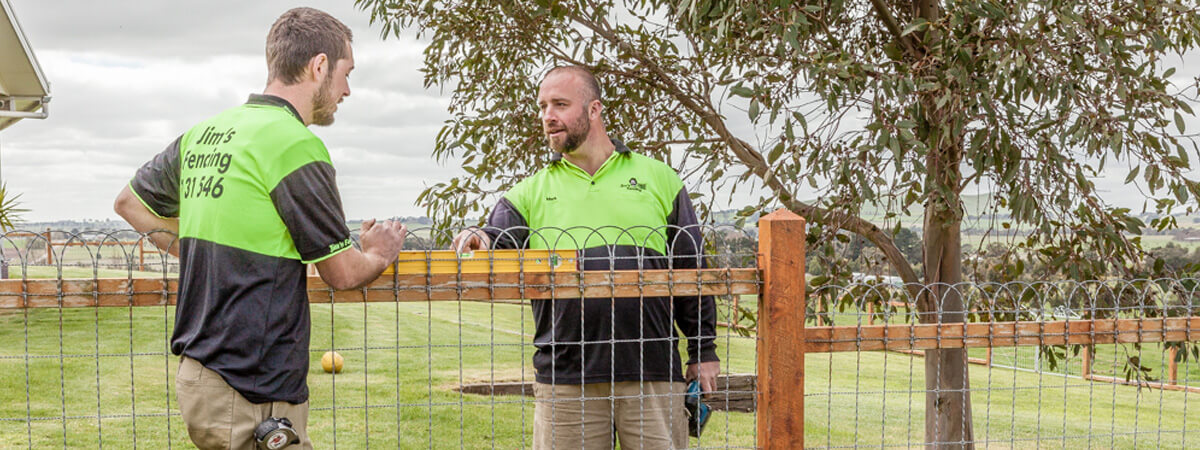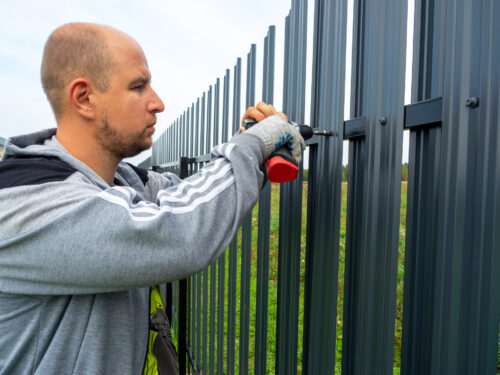
Fences are essential components of properties in Australia, providing privacy, security, and boundary demarcation. However, like any structure, fences may require repairs over time due to wear and tear, weather damage, or accidents. Navigating the legal requirements for fencing repairs in Australian states is crucial to ensure compliance with local regulations and standards. In this comprehensive guide, we’ll explore the legal considerations for fencing repairs across different Australian states, address frequently asked questions, and provide insights into why choosing Jim’s Fencing can simplify the repair process.
Understanding Legal Requirements for Fencing Repairs:
New South Wales (NSW):
- In New South Wales, fencing laws are governed by the Dividing Fences Act 1991. According to this legislation, adjoining property owners are jointly responsible for the construction and maintenance of dividing fences. When it comes to repairs, both parties must agree on the scope of work and cost-sharing arrangements. It’s essential to adhere to these legal requirements to avoid disputes and ensure compliance with the law.
Victoria (VIC):
- In Victoria, fencing matters are regulated by the Fences Act 1968. Under this legislation, property owners are obligated to maintain dividing fences in good repair. If repairs are needed, the responsibility and cost-sharing arrangements are determined based on the location of the fence and the specific circumstances of the repair. Understanding the provisions of the Fences Act is essential for navigating fencing repair requirements in Victoria.
Queensland (QLD):
- Queensland’s fencing laws are governed by the Neighbourhood Disputes (Dividing Fences and Trees) Act 2011. According to this legislation, property owners are required to contribute equally to the cost of maintaining dividing fences. When it comes to repairs, agreements must be reached between adjoining property owners, and disputes can be resolved through mediation or the Queensland Civil and Administrative Tribunal (QCAT).
Western Australia (WA):
- In Western Australia, fencing matters are regulated by the Dividing Fences Act 1961. This legislation outlines the responsibilities of adjoining property owners for maintaining dividing fences. When repairs are necessary, both parties must agree on the scope of work and cost-sharing arrangements. Failure to comply with these legal requirements can result in disputes and potential legal consequences.
South Australia (SA):
- South Australia’s fencing laws are governed by the Fences Act 1975. According to this legislation, property owners are responsible for maintaining dividing fences in good repair. When repairs are needed, the cost-sharing arrangements and responsibilities are determined based on the condition of the fence and the circumstances of the repair. Adhering to the provisions of the Fences Act is essential for ensuring compliance with legal requirements.
Tasmania (TAS):
- Tasmania’s fencing laws are regulated by the Fences Act 1908. Under this legislation, adjoining property owners are responsible for maintaining dividing fences in good condition. When repairs are necessary, agreements must be reached between the parties regarding the scope of work and cost-sharing arrangements. Understanding the requirements of the Fences Act is essential for navigating fencing repair obligations in Tasmania.
Northern Territory (NT) and Australian Capital Territory (ACT):
- In the Northern Territory and Australian Capital Territory, fencing matters are governed by common law principles and local regulations. While there may not be specific fencing legislation in these territories, property owners are still responsible for maintaining dividing fences and resolving disputes amicably. Seeking legal advice and consulting with neighboring property owners is advisable when repairs are needed.
Why Choose Jim’s Fencing:
Jim’s Fencing stands out as a trusted and reliable choice for fencing repairs across Australia. Here’s why property owners choose Jim’s Fencing:
- Nationwide Coverage: With a network of franchisees across Australia, Jim’s Fencing offers nationwide coverage, ensuring that property owners can access quality fencing repair services wherever they are located.
- Expertise and Experience: Jim’s Fencing contractors are highly trained and experienced professionals with expertise in all aspects of fencing repairs. Whether it’s fixing damaged panels, replacing posts, or addressing structural issues, Jim’s Fencing contractors have the skills and knowledge to deliver superior results.
- Compliance with Legal Requirements: Jim’s Fencing ensures compliance with local fencing laws and regulations, providing peace of mind to property owners. By understanding the legal requirements for fencing repairs in different Australian states, Jim’s Fencing contractors can navigate the process efficiently and effectively.
- Transparent Pricing: Jim’s Fencing offers transparent pricing and upfront quotes, eliminating any surprises or hidden costs for property owners. With competitive rates and no-obligation quotes, Jim’s Fencing makes the repair process hassle-free and budget-friendly.
- Customer Satisfaction Guarantee: Jim’s Fencing is committed to customer satisfaction, prioritizing clear communication, professionalism, and quality workmanship. From the initial consultation to project completion, Jim’s Fencing ensures a positive experience for every client.
FAQs:
Q1: Who is responsible for fencing repairs between neighboring properties?
The responsibility for fencing repairs between neighboring properties varies depending on the state legislation and the specific circumstances of the repair. Generally, adjoining property owners are jointly responsible for maintaining dividing fences and sharing the costs of repairs.
Q2: How can disputes over fencing repairs be resolved?
A2: Disputes over fencing repairs can be resolved through negotiation, mediation, or legal channels, depending on the severity of the disagreement. Seeking legal advice and consulting with neighboring property owners can help resolve disputes amicably and avoid potential legal consequences.
Q3: What should I do if my neighbor refuses to contribute to fencing repairs?
A3: If your neighbor refuses to contribute to fencing repairs despite legal obligations, you may need to seek legal advice and explore options for dispute resolution, such as mediation or tribunal proceedings. It’s essential to understand your rights and obligations under the relevant state legislation.
Summary:
Navigating the legal requirements for fencing repairs in Australian states is essential for property owners to ensure compliance with local regulations and standards. Understanding the provisions of relevant fencing legislation and seeking professional assistance from reputable providers like Jim’s Fencing can simplify the repair process and ensure satisfactory outcomes. By choosing Jim’s Fencing, property owners can access expert services, transparent pricing, and peace of mind, knowing that their fencing repair needs are in capable hands. Contact us today!

